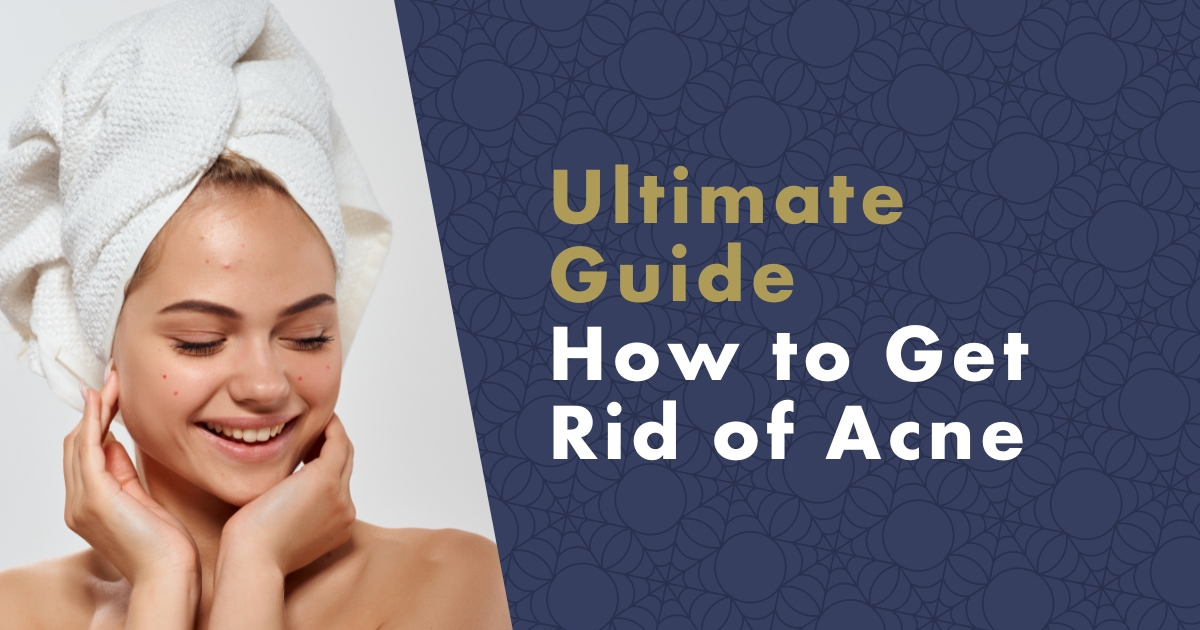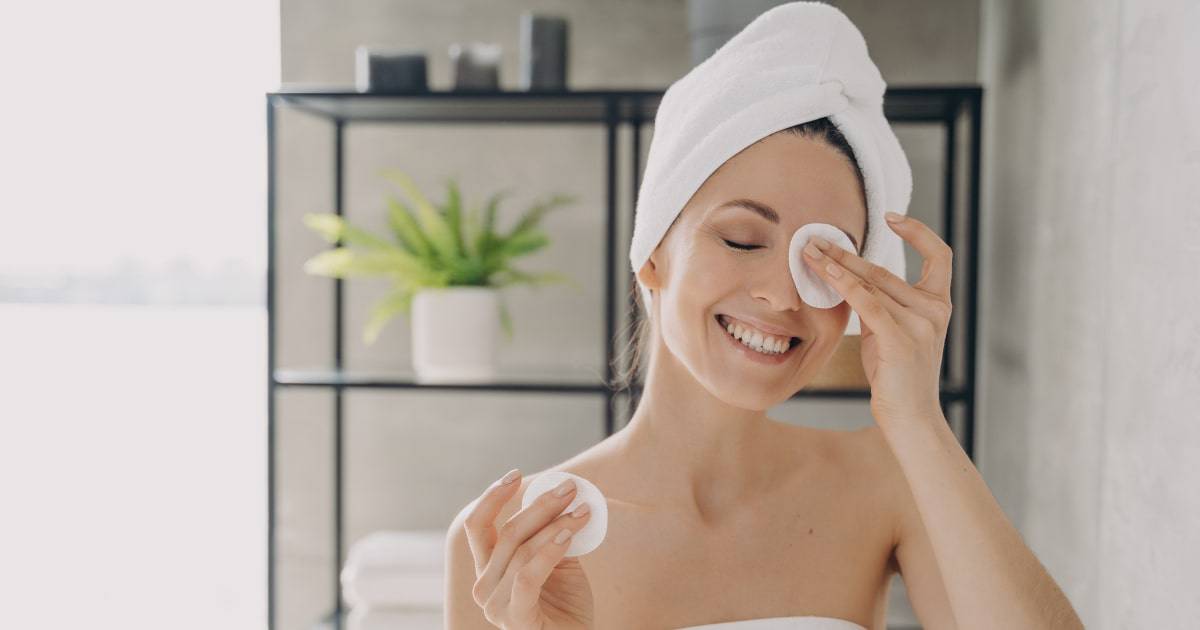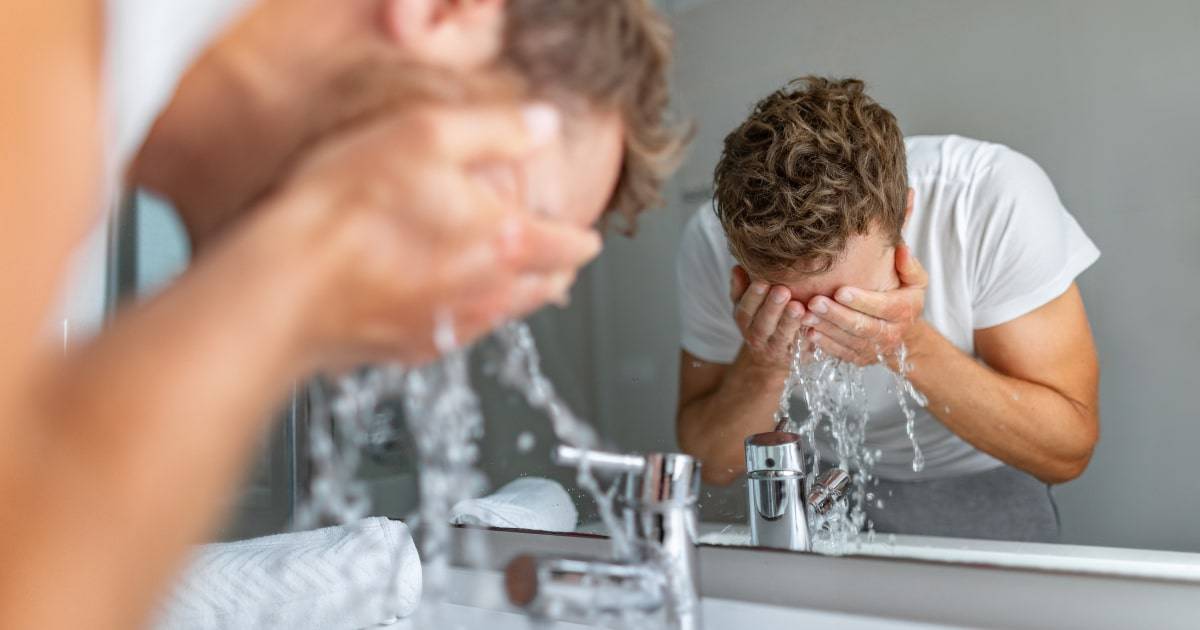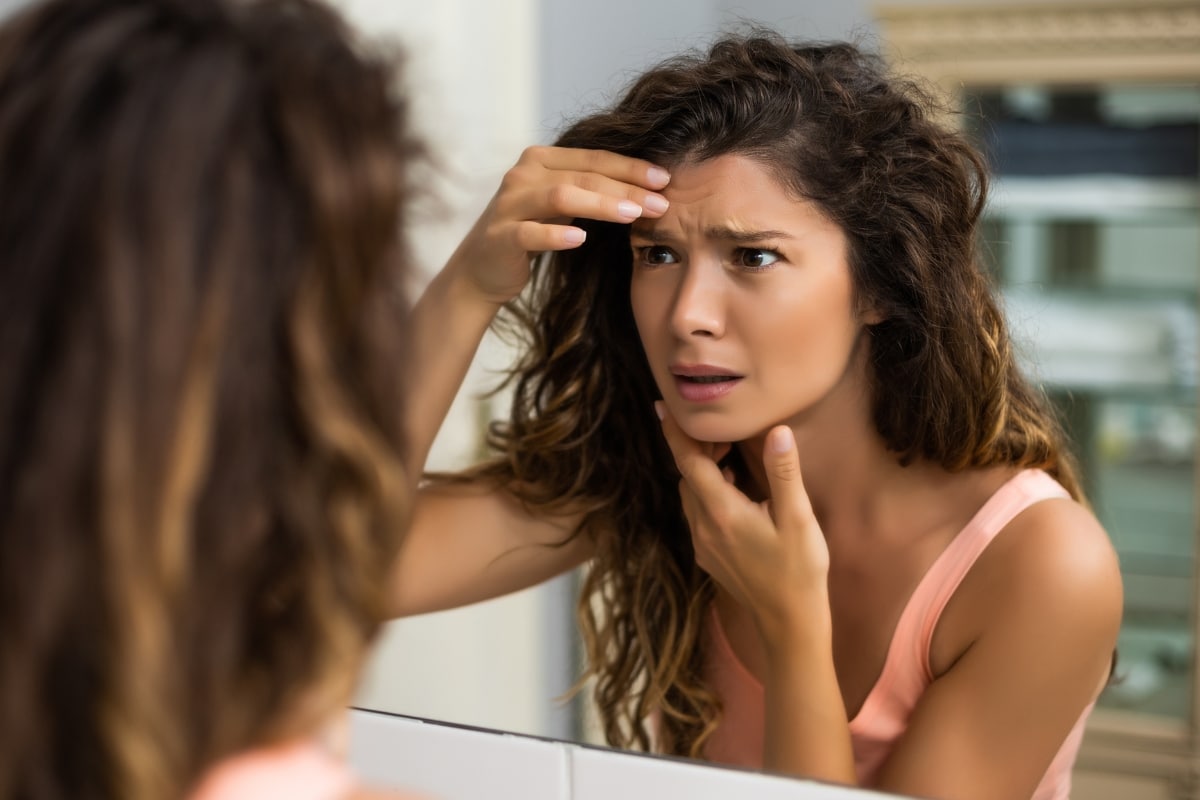Setting out on a journey towards clear and radiant skin involves understanding the nuances of acne, from subcutaneous pimples to the persistent challenge of dealing with comedones. Achieving a blemish-free complexion is a universal aspiration, and in this comprehensive guide, we delve into the intricacies of skincare routines, exploring effective methods to bid farewell to acne and its unwelcome companions. From the depths of subcutaneous pimples to the surface of the skin, we uncover the secrets to banishing acne, shedding light on suitable skincare practices and even considering the impact of bed sheets on acne-prone skin. Join us on this transformative expedition as we unravel the ultimate guide on how to get rid of acne.

Understanding the Different Types of Acne
Acne is a common skin condition that affects many people worldwide. It occurs when hair follicles become clogged with oil and dead skin cells, leading to the formation of pimples, blackheads, and whiteheads. Acne can range from mild to severe, and different types of acne can present differently. Here are the different types of acne:
-
Whiteheads: These are small, flesh-colored or white bumps that form when a pore is blocked by oil and dead skin cells. Whiteheads usually appear on the face, neck, and chest.
-
Blackheads: Blackheads form when a pore is clogged with oil and dead skin cells, but the pore remains open. The top of the plug is exposed to air, which causes it to darken. Blackheads are commonly found on the nose, forehead, and chin.
-
Papules: Papules are small, raised bumps that are often red in color. They occur when hair follicles become inflamed and infected with bacteria. Papules can be tender to the touch and usually appear on the face, neck, and chest.
-
Pustules: Pustules are similar to papules, but they contain pus. They are often larger than papules and have a red base with a yellow or white center. Pustules can be painful and are commonly found on the face, neck, and chest.
-
Cysts: Cysts are large, painful bumps that are filled with pus. They form when a pore becomes infected and the infection spreads to surrounding tissues. Cysts can be difficult to treat and often leave scars.
-
Nodules: Nodules are deep, painful bumps that form when hair follicles become inflamed and infected. They are larger than papules and pustules and can take weeks or even months to heal. Nodules are commonly found on the face, neck, and back

What Is Subcutaneous Acne and How Does It Develop?
Subcutaneous acne is a colloquial term for a dermatosis characterized by small subcutaneous lumps filled with sebum. It is a more severe form of a comedo and often leads to unsightly acne scars. The most common causes can be genetics or inadequate skin cleansing, but it can also be influenced by allergens such as pollen and dust. For example, sleeping on an unsuitable pillow or mattress can cause acne. Therefore, it is recommended to use anti-allergic pillows, blankets, and mattress covers for severe acne.
Subcutaneous acne manifests as hard red-purple inflammatory nodules or bumps that cannot be squeezed, heal poorly, and are extremely painful. The treatment of subcutaneous acne is more demanding and often leaves scars.
Treatment may include adapalene, benzoyl peroxide, retinoids, antibiotic ointments, and azelaic acid. Chemical peels may also temporarily improve the condition, but poorly performed peels can worsen acne.
Why Does Acne Occur?
The main cause of acne is a clogged hair follicle (comedone) in which inflammation can occur. Comedones naturally form as skin cells multiply in the skin. However, not all comedones lead to acne and can dissolve on their own in healthy skin.
There is a close connection between acne and hormonal changes, with acne often appearing during puberty or due to other hormonal changes. This is why women may continue to experience acne after reaching adulthood, while men are generally less likely to suffer from acne as adults. Menstrual cycles also have a significant impact on acne, with skin worsening for one week each month. It is important to not evaluate treatment success before a month has passed.
Genetics also play a large role, and drug use, smoking, and the use of unsuitable cosmetics that clog pores or overly dry the skin (resulting in increased sebum production) can also contribute to increased acne.
What Are the Main Cause of Acne?
The main cause of acne is a clogged hair follicle (comedo), which can become inflamed. Comedones develop naturally as skin cells multiply. However, not all comedones develop into acne, as they can dissolve naturally in healthy skin. Hormonal changes are also closely related to the development of acne, with puberty and other hormonal changes being the most common times for acne to occur. Genetics, drug use, smoking, and the use of unsuitable cosmetics that clog pores or overly dry out the skin can also play a significant role in the formation of acne.

10 Tips on How to Get Rid of Acne
The following tips should be taken as a systematic treatment and largely as prevention against the emergence of new pimples. Over time, you will learn to recognize very well what may trigger a worsening of your skin in your case. There are areas where you cannot do much, such as hormonal changes that may occur during the menstrual cycle. It is therefore perfectly normal to observe a worsening of the skin for about one week a month.
If you are serious about fighting acne with the goal of significantly suppressing it, focus on several areas. These include proper skin cleansing, choosing suitable cosmetics, and lifestyle changes.
1. Cleanse Your Skin Properly
If you regularly use makeup, you should thoroughly remove it every night. If you do not use makeup, you should still cleanse your face because dust and pollen can cause acne just like makeup residue. You should never sleep with makeup on. Before using makeup remover or oil, always rinse your face with lukewarm water. When using oil for makeup removal, always use another water-based cleansing product.
Although it may sound strange, it is ideal to remove makeup while taking a shower, as the steam will open up your pores and make it easier to remove everything thoroughly. After removing your makeup, don't forget to rinse your face with water to remove any traces of makeup remover before applying your skincare products. Always use a separate towel for your face and another for your hands and body.
A very popular and effective way to clean the skin is called double cleansing. Double cleansing, or two-phase skin cleansing, originally comes from South Korea and is simply a two-step makeup removal process. First, you use a makeup remover milk or oil-based product, and then you thoroughly cleanse the skin with a water-based product such as foam, gel, or tonic. According to dermatologists and beauticians, double cleansing is the only way to thoroughly clean the skin.
2. Using Suitable Cosmetics
To properly care for acne-prone skin, it is essential to choose the right and quality products that contain effective ingredients to help fight inflamed pimples.
In addition to external treatment with suitable cosmetics, it is also beneficial to add dietary supplements with zinc content. This element plays a crucial role in maintaining optimal skin, hair, and nail health and aids in the healing process.
It is essential to select the appropriate facial cleanser for morning and evening cleansing before applying moisturizer, face mask, or serum. For more intensive cleansing, use a gel-based product. The specially formulated cleansing gel for sensitive skin with acne-prone tendencies - Cleansing Gel 200 ml - offers a composition designed to meet the needs of problematic skin. Its typical consistency helps clean pores without disrupting the skin's natural protective barrier. The addition of glycerin and coconut oil extract provides gentle hydration during cleansing, making it suitable for all skin types.
- Salicylic acid
Salicylic acid is an interesting substance of natural origin. It is extracted from the white willow bark and offers natural anti-inflammatory effects and assistance in healing existing inflammation and minor wounds. This substance is an excellent aid in treating acne and should not be missing from at least one product for people suffering from this problem. For best results and skin benefits, it is recommended to use a cream with salicylic acid .Moisturizer for acne-prone skin Acne Cream NAFIGATE 50 ml contains salicylic acid and almond oil, combining antibacterial and cleansing properties with the necessary hydration for fresh and healthy-looking skin. You can also try a nano-fiber acne mask for additional benefits.
One interesting feature of salicylic acid is its chemical structure. It is a beta hydroxy acid that dissolves in oil, allowing it to penetrate deep into the skin's structure and directly target sebaceous glands and clogged pores, effectively suppressing inflammation and preventing the formation of painful, red pimples. Moreover, it supports the production of collagen, which helps maintain skin elasticity and firmness.
However, be careful not to overuse salicylic acid-based products, especially if you have dry skin. It is recommended to apply only one cream or other product containing this ingredient daily. For oily skin, avoid combining it with retinoids and instead use these two effective ingredients separately in the morning and at night.
Another helpful ingredient in acne-fighting cosmetics is panthenol. It helps reduce skin itching and promotes acne healing, while also possessing significant hydrating properties that soften and moisturize the skin. It's no surprise that panthenol is a key component in Acne Face Mask 50ml, a gentle mask that also contains salicylic acid and a natural polymer called P3HB, which absorbs impurities and regulates excess sebum. This combination of ingredients creates a functional mask suitable for all skin types, particularly those with acne-prone skin.
Another option for people struggling with acne is the Brightening Dry Sheet Nanofiber Face Mask [n]fibrecare. This face mask do not contain any liquid and only require water for application, making them suitable for individuals with allergies, atopic eczema, or sensitive skin.
#produkty#https://www.nanospace.store/search/?string=acne
- Hyaluronic acid is a great ally in the fight against acne.
Hyaluronic acid is perhaps the most commonly used ingredient in cosmetics today, and it's no wonder, as its discovery has revolutionized current principles and knowledge in dermatology. Hyaluronic acid is naturally present in the human body, but as we age, its quantity slowly diminishes, making it necessary to supplement it through high-quality cosmetic products. Because it supports natural hydration and the renewal of individual skin cells, it is a very helpful tool in fighting acne.
For a truly observable effect, it's essential to choose a quality product. One example is a hyaluronic acid serum - Hyaluron Essential NAFIGATE 20ml, which places special emphasis on small molecules of hyaluronic acid. This allows it to penetrate deeper layers of the skin, providing a longer-lasting effect.
Read article: Hyaluronic Acid: What are the Best Products?
Caring for dry skin can be quite challenging. Although it may produce insufficient sebum, it can still suffer from acne, especially when using inappropriate cosmetics. Attempting to hydrate the skin with greasy creams can clog the pores, leading to acne breakouts. While genetics plays a significant role in dry skin, inadequate skincare, stress, hormonal imbalances, and an unhealthy lifestyle can also contribute to the problem.
In general, it is advisable to use products specifically designed for dry skin. First and foremost, avoid using products containing alcohol, as it can further dry out the skin and exacerbate the problem. Instead, opt for a special facial foam for cleansing every morning and night, followed by a high-quality moisturizer designed for dry skin.

- Proper Care for Normal to Combination Skin with Acne
Managing acne on normal to combination skin doesn't usually require much effort. However, it does require the right care that won't excessively dry out the skin. In practice, this means using only one product with salicylic acid and combining it with moisturizing cosmetics.
For normal skin, it is important not to neglect hydration and thorough cleansing as a prevention against inflammation. In the case of combination skin, acne is typically observed only in the so-called T-zone on the forehead, nose, and chin. In such cases, it is advisable to use an acne-fighting product and apply it locally to problem areas.
- How to get rid of acne on oily skin
Oily skin is inherently more prone to acne due to its tendency to produce excess sebum, which can provide an environment for inflammation to thrive. However, with proper care, oily skin can offer fewer hydration issues and may be less prone to premature wrinkles. To prevent acne, it is important to avoid touching the skin with dirty hands and to maintain regular cleansing routines in the morning and evening. It is also recommended to use a lighter moisturizer with ingredients such as salicylic acid to help prevent acne.
In oily skin, acne can escalate into seborrheic eczema, where yeast proliferates on the skin, feeding on the excess oil and causing inflammation in the form of pimples and small pustules. This condition is often accompanied by itching and burning sensations, which can worsen the overall discomfort. If acne is severe, it is essential to consult a dermatologist for a prescription for appropriate treatment.

3. Minimize Contact with Bacteria
Pimples often appear in areas that we touch with our hands during the day. Avoid touching your face with your hands as dirt on your hands can worsen inflammation. If you are one of those who can't resist touching their face frequently, always have disinfectant available or better yet, wash your hands frequently during the day. Dirt on your hands will only worsen the inflammation.
According to recent studies, there is also something called "cell phone acne" - acne caused by mobile phones. Clean your phone display, which can be a source of bacteria and can cause acne on your face.
4. Get 7 or More Hours of Sleep Daily
Lack of sleep, along with stress and sweating, is considered one of the three main triggers of acne. Less than 7 hours of sleep per day creates a state in which stress hormones are released and adrenaline is released. Not only that, but there is a two-way communication between the central nervous system and the immune system. Lack of sleep disrupts the chemical balance in the skin, which prevents the formation of pimples.
Be careful, sleeping on an unsuitable pillow and mattress can also cause acne. After two years, up to 10% of the weight of a pillow is made up of dust mites. But that's not all - when Airmid Health Group examined dozens of used pillows, they found that 100% of them contained bacteria and 50% contained mold. It is therefore recommended that those with severe acne use anti-allergy pillows, duvets, and mattress covers.
#produkty#https://www.nanospace.store/favourable-sets/
5) Use Appropriate Dietary Supplements
In addition to external care with suitable cosmetics, it's worth adding dietary supplements containing zinc. This element plays an important role in maintaining optimal skin, hair, and nail condition. It also helps with the healing process.
Collagen is also recommended for beautiful skin, which our body can produce on its own, but its production gradually decreases from the age of 25. Collagen is essential for beautiful and healthy skin, so if you are struggling with skin problems, definitely include collagen in your diet.
#produkty#https://www.nanospace.store/search/?string=collagen
6) Don't Squeeze or Pick Pimples
Never squeeze or pick pimples. This will only spread acne and may lead to permanent scarring. Unprofessional interference can cause unpleasant inflammation or infection, prolonging acne treatment. In the end, it may leave unsightly marks on your face. Instead, visit a professional who can clean your skin.

7) Limit Alcohol Consumption
Drinking alcohol also causes the release of histamines, which dilate blood vessels, causing dark circles under the eyes and redness of the skin. Pimples are also more visible. The sugars found in alcohol, especially in beer, wine, and cider, exacerbate the formation of pimples. Replace these vices with water, and you'll be rewarded with clear skin.
8) Drink Plenty of Water
Proper hydration is important for the healthy appearance of our skin. It's important to hydrate our skin not only externally but also internally. If you don't drink enough water, it will affect your whole body and, of course, your skin. Adequate hydration has direct and indirect effects on acne treatment.
Firstly, in the case of bacterial acne, water helps remove toxins and bacteria from the skin, reducing the likelihood of clogged pores. Secondly, sufficient skin hydration supports the production of collagen, which helps in the healing of acne and reduces inflammation.
9) Limit Foods that Cause Acne
Some foods are absolutely unsuitable when trying to get rid of acne. In general, you should avoid meat, fried foods, and foods high in sugar. High glycemic index foods quickly raise blood sugar levels, causing our body to produce more insulin. Insulin stimulates androgens, which in turn stimulate excessive production of sebum and excessive cell production, leading to the hardening of the skin, which can lead to clogged pores. For me personally, spicy food that I love is a trigger for acne. Today, I still have it occasionally, but during my acne fight, I completely cut it out.
10) Address Internal Causes
Some studies suggest that gum inflammation and tooth decay can lead to acne. This is because these infections increase the amount of Propionibacterium bacteria, which are the most common bacteria found in pimples. This often causes skin inflammation and sometimes even acne. If you take the fight against acne seriously, it is also important to exclude these causes.
Give It Time: Evaluate Changes After a Month
Taking care of your skin and battling acne can be a frustrating and time-consuming process. It's important to remember that changes to your skin don't happen overnight and that it takes time for the skin to renew and heal.
To see real results and evaluate the effectiveness of any changes you've made to your skincare routine, it's crucial to wait at least a month. This allows your skin enough time to adjust to any new products or routines and gives you a chance to track progress and see what's working and what's not.
Remember, patience and consistency are key when it comes to achieving clear and healthy skin. Don't give up too soon or get discouraged if you don't see immediate results. Keep up with your skincare routine and evaluate changes after a month to see how far you've come in your journey to beautiful, acne-free skin.
FAQ
What is acne?
Acne is a common skin condition that occurs when hair follicles become clogged with oil and dead skin cells. This can cause pimples, blackheads, whiteheads, and other types of blemishes on the skin.
What causes acne?
Acne is typically caused by a combination of factors including excess oil production, clogged pores, inflammation, and the presence of bacteria on the skin. Hormonal changes and certain medications can also contribute to the development of acne.
What are some common acne treatments?
Common acne treatments include over-the-counter topical medications such as benzoyl peroxide and salicylic acid, prescription topical and oral medications such as retinoids and antibiotics, and various skincare and lifestyle changes such as keeping the skin clean and avoiding certain foods.
Can acne be cured?
While there is no known cure for acne, it can be effectively treated and managed with the appropriate skincare and medication regimen. With consistent treatment and patience, many people are able to improve the appearance of their skin and reduce the occurrence of acne breakouts.
Is it okay to pop pimples?
No, it is not recommended to pop pimples as it can lead to further inflammation and scarring of the skin. It is best to leave pimples alone and allow them to heal naturally or seek professional treatment if necessary.
Can diet affect acne?
There is some evidence to suggest that certain foods, such as those high in sugar and dairy products, may contribute to the development of acne in some individuals. However, more research is needed to fully understand the relationship between diet and acne.
How to get rid of acne overnight?
Did you get a pimple and need to heal it as quickly as possible? It won't always be possible overnight, but you can do your best to make the pimple fade quickly and get your skin back in order. First, thoroughly clean the pimple (never pick or squeeze it), then apply Moisturizer for Acne-Prone Skin and an Face Mask for Acne-Prone Skin to your skin. Sleep on your back and try not to touch your face as much as possible.
How to get rid of acne in 1 day?
Thoroughly clean your skin (never pick or squeeze pimples), then apply Moisturizer for Acne-Prone Skin and anFace Mask for Acne-Prone Skin. During the day, don't wear makeup, don't touch the pimple, and rinse your skin with lukewarm water (clean with cleansing products a maximum of 2 times a day). In the evening, clean your skin again, apply acne cream, and sleep on your back. It won't always be possible to get rid of a pimple in one day and get your skin back in order as quickly as possible, so remember that less is sometimes more. Don't try to apply a million products to your skin and be patient.
How to get rid of back acne?
There can be several reasons why you get acne on your back. It could be due to your diet, genetics, or using the wrong cosmetics. Very often, heavy hair products can also clog your pores. When drying your hair, always put it in a turban or blow-dry it immediately. Bacteria from excessive sweating can also cause acne. This can be tackled with antibacterial clothing that contains silver nanoparticles, which destroys unwanted bacteria and sweat odor.
Home remedies for acne
According to home remedies, yeast works great for acne. Mix a cube of yeast with a little water, apply the paste to your face, and after fifteen minutes, rinse it off with lukewarm water. You might also be pleasantly surprised by a recipe consisting of grated cucumber mixed with yogurt. Other ideal ingredients for homemade masks for acne-prone skin are honey, cinnamon, tomato, red wine, grapefruit, kiwi, banana, watermelon, apples, strawberries, and even egg. You can also try applying egg white on your face for a few minutes, then rinse and apply the egg yolk. A popular ingredient is also honey or taking an oatmeal bath. Soaked oat flakes can also be applied as a mask and left on the face for about 30-40 minutes. Chamomile is also an anti-inflammatory herb. You can, for example, create a compress from a strong decoction. However, be careful when making homemade cosmetic masks, as they can irritate your skin or cause allergic reactions.
Sources
- HAIDER, Aamir; SHAW, James C. Treatment of acne vulgaris. Jama, 2004, 292.6: 726-735.
- ZOUBOULIS, Christos C.; PIQUERO-MARTIN, Jaime. Update and future of systemic acne treatment. Dermatology, 2003, 206.1: 37-53.
- FOX, Lizelle, et al. Treatment modalities for acne. Molecules, 2016, 21.8: 1063.
- HALACHMI, Shlomit; BEN AMITAI, D.; LAPIDOTH, Moshe. Treatment of acne scars with hyaluronic acid: an improved approach. J Drugs Dermatol, 2013, 12.7: e121-e123.
- ZANDER, Ernst; WEISMAN, S. Treatment of acne vulgaris with salicylic acid pads. Clinical therapeutics, 1992, 14.2: 247-253.
- SHALITA, A. R. Comparison of a salicylic acid cleanser and a benzoyl peroxide wash in the treatment of acne vulgaris. Clinical therapeutics, 1989, 11.2: 264-267.
- SCHROM, Kory P., et al. Acne severity and sleep quality in adults. Clocks & Sleep, 2019, 1.4: 510-516.
- FABBROCINI, Gabriella, et al. Percutaneous collagen induction: an effective and safe treatment for post-acne scarring in different skin phototypes. Journal of dermatological treatment, 2014, 25.2: 147-152.

